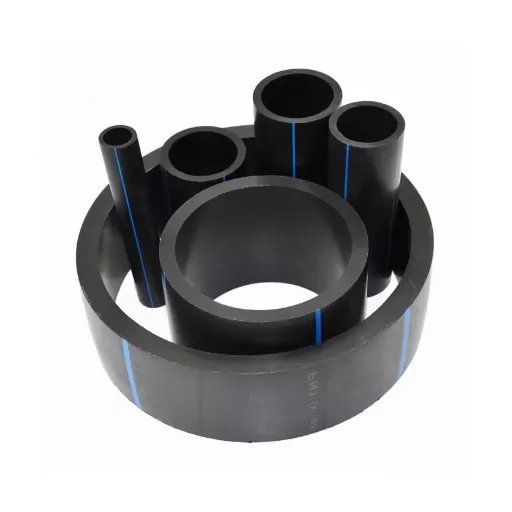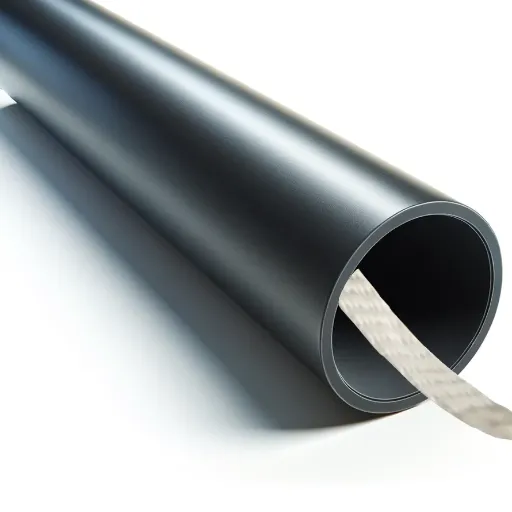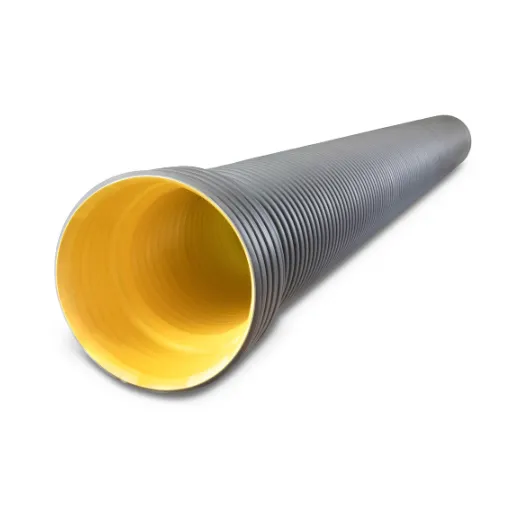When considering irrigation facilities that cater to durability and efficiency, 3-inch HDPE pipe rolls have truly transformed the agricultural and landscaped scenario. HDPE stands for high-density polyethylene and these pipes enjoy high reputation in irrigation works because they are extremely resistant to impact and crushing, bending, abrasion, and also can withstand harsh environmental conditions. This guide leads you through whatever you need to know about 3-inch HDPE pipe rolls: their advantages, applications, installation, and maintenance tricks. So, if you are looking to enhance the life of your irrigation system or simply make it work more efficiently, you will get some basic facts here from which you can build your decisions.
Introduction to HDPE Pipes
What is HDPE?
High-Density Polyethylene- HDPE, as it is commonly called, is an abundantly used plastic material in many industries owing to its strength and flexibility. It is made from petroleum through polymerization processes, rendering a highly-density, low-weight material that is quite sturdy yet adversely reacts to any kind of impact or environmental stress. HDPE is known for its resistance to the harshest chemicals, making it perfect piping material where there are severe applications.
One of the main reasons HDPE pipe has gained popularity is due to its properties under pressure and extreme conditions. Contrary to metals or PVCs, HDPE pipes will not corrode or rust, nor will they be subjected to scaling, thereby guaranteeing that their lifespan is even longer in the most challenging environments. Also, HDPE has a smooth interior surface promoting steady water flow, hence less chance for blockage, which serves irrigation purposes.
Alongside its strength and durable characteristics, HDPE is considered green. It is recyclable and requires less energy for the production process than most alternatives. By these factors, HDPE pipes become a sustainable yet cheap solution for today’s irrigation and water conveyance needs. These features make HDPE a major industrial material for any application where reliability and efficiency are crucial.
Benefits of Using HDPE Pipes
Durability and Longevity
HDPE pipes are virtually impervious to corrosion, wear, and chemical actions and thus an operational lifetime exceeding 50 years is assigned to them under much of the conditions. This durability means lower costs of maintenance and replacement and hence is preferred for long-term projects.
Lightweight and Easy Installation
Compared with conventional pipe materials such as steel and concrete, HDPE is very light, enabling transport and installation faster and more cost-effective. Flexibility supports easy bending, thereby eliminating the need for joints and fittings.
Leakage-Free Joints
Using fusion welding with HDPE pipes ensures monolithic systems with no leakage at joints, efficient water carrying, and prevention of water loss. This reliability has been a major selling point for irrigation and municipal water systems.
High Chemical and Corrosion Resistance
HDPE pipes have special qualities that work against deterioration caused by chemicals, salts, and acids; hence, they find the best applications in industrial water systems and waste management.
Environmentally Friendlier Material
Being 100% recyclable, HDPE manufacturing hardly impacts the environment. On top of it, with the characteristic of durability, it generates very little waste as the years go by, promoting sustainability.
Applications of 3 Inch HDPE Pipe
-
Agricultural Irrigation Systems
HDPE pipes find wide applications in agricultural irrigation, where they transport water across the field. These pipes must resist the many stresses of the outdoor environment and hence need to be very durably flexible. They can have flow rates of about 200 gallons per minute.
-
Potable Water Supply
Within local government and residential potable water supply systems, these pipes are in use because they are non-toxic to humans and strongly resistant to corrosion. Such pipes meet all health requirements, being suitable for water conduction over long distances.
-
Industrial Water Systems
Being highly chemical and corrosion-resistant are benefits of HDPE pipes being used in the industrial setting to convey process water, cooling water, or treated wastewater. Working pressures of up to 100 psi can be handled by them, making them a reliable choice under demanding conditions.
-
Sewage and Rain Water Drainage Systems
HDPE pipes constitute a very strong solution in sewage and drainage systems against abrasion and chemical corrosion. The surface smoothness inside impedes any blockage. It can carry high flow rates of waste.
-
Geothermal Pipes System
Being very thermally-resistant and long-lasting, HDPE pipes are used for geothermal heating and cooling systems. These systems transfer geothermal energy, functioning well under varied underground conditions.
Understanding the 3 Inch HDPE Pipe Roll
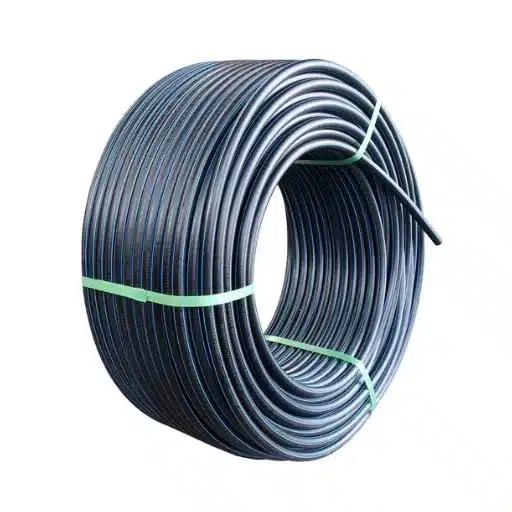
Specifications of 3 Inch HDPE Pipe
The 3-inch HDPE pipe is of a very versatile nature, suitable for both industrial and residential purposes, and is quite durable and reliable in the long run. The following are some general specifications and features:
- Material: High-density polyethylene of PE80 or PE100 grade.
- Outer Diameter: Typically 90mm (3.54 inches), depending upon industry standards.
- Wall Thickness: Depends on pressure rating, usually ranging from SDR 11 to SDR 17, e.g., an SDR 11 pipe will have a thickness of about 8.2 mm.
- Pressure Rating: Pressure ratings ashore at 200 psi or above, depending on the type of application and rating of SDR chosen.
- Length and Packaging: In rolls or in straight lengths; lengths of rolls are from about 50 to 500 feet for ease of installation.
- Temperature Resistance: Works within a wider range of temperature, generally from -40°F to 140°F (-40°C to 60°C), suitable for most climatic conditions.
- Certifications: Compliant with industry standards such as ASTM, IS, or ISO certifications for properties of safety and performance.
The HDPE pipe of 3 inches is one of the most widely used pipes in the water supply system, irrigation system, gas distribution, and so on, for sewage handling. Being lightweight, it offers easy transportation and installation. Its flexible nature adapts to different terrains, minimizing fittings and joints. Thus, it is a very cost-efficient and sustainable solution to long-term use.
Features of HDPE Pipe Rolls
Higher Durability
Being corrosion-resistant, chemical-resistant, and UV-resistant, HDPE pipe rolls guarantee a very long service life even when exposed to adverse environmental conditions. They can stand exposure to harsh chemicals and substances without a loss in structural integrity.
Flexibility
The innate property of flexibility of the HDPE pipe rolls helps in their easy installation in uneven or difficult terrains. This adaptability decreases the number of fittings, thereby reducing the time and cost associated with installation.
Leak-Proof Joints
The most common joining method for HDPE pipes is heat fusion to ensure an integral and leak-proof system. This substantially reduces water loss and improves the performance of irrigation and water supply applications.
Lightweight
Being much lighter when compared to conventional metal or concrete pipes, these HDPE pipe rolls can be transported, handled, and installed with much less labor and cost of equipment.
Eco-Friendly Nature
The Eco-friendly nature of HDPE pipe rolls allows for recycling, thus representing much less impact on the environment than other materials. Being very secure less frequent replacement is needed, thus aiding in sustainable infrastructure development.
Pressure Resistance
These HDPE pipes are built to tolerate high pressures, making them useful for various applications, including water mains, gas distribution, and industrial applications.
Wide Temperature Range
These pipes work very well in all climatic conditions, handling all variations in temperatures at high altitudes or lows without cracking or degrading.
Cost-Efficiency
Having an edge in cheaper maintenance and reliability in the long run, thus HDPE pipe rolls present a really cost-effective solution for infrastructure projects.
Features such as these speak out loud and clear about the versatility and utility of these HDPE pipe rolls, making them preferred across sectors ranging from agriculture to urban development.
How to Choose the Right Pipe Roll
When picking the suitable HDPE pipe roll, the choice depends on my requirement for the intended project, which includes the kind of material being carried, pressure profiles, and the environmental profile to which the pipes will be exposed. Say the pipes are to withstand high-pressure fluids or temperature extremes; then I ensure that the pipe specifications are consistent with those requirements. Another issue of vital concern is that they be compatible with an existing system.
Then I come to measure the size and dimensions of the pipe roll. I size the pipe diameter as the acting factor for the effective flow integration of pipe rolls, and then also come for the roll length so that the joint connections may be kept to a minimum; hence installation efficiency and reduction of leakages can be considered. Also, I evaluate the standards of the pipe rolls and check for certificates to guarantee quality and conformity with the industry’s regulations.
Finally, I compare cost-efficiency and quality and ensure the supplier’s reliability. I compare suppliers by price; however, I also consider long-term factors such as durability, maintenance, and warranty. Balancing these factors, I can confidently select a pipe roller that meets the project requirements within the budget.
HDPE Pipe for Irrigation Systems
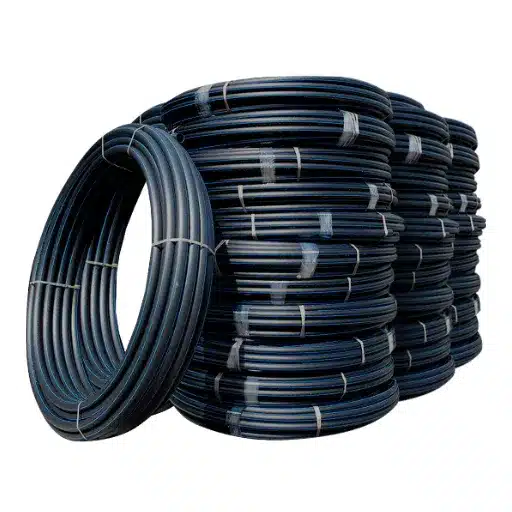
Importance of HDPE in Irrigation
HDPE, or High-Density Polyethylene, revolutionizes irrigation systems as matured technology, being highly durable, very flexible, and excellent against chemical action. Great, for both corrosion and chemical reactions, HDPE is used for the conveyance of water containing fertilizers and certain agricultural chemicals. One may appreciate the installation procedures being made simpler by being lightweight with flexibility to adjust to given topographies, requiring less excavation hence minimizing overall labor costs.
Being subjected to high pressure without cracking or bursting is one of the good advantages of HDPE pipes. For irrigation systems that require the constant flows of water at varying pressures, they are, therefore, highly rugged. HDPE is further known for its longer life expectancy, with some being able to last more than 50 years. With this longevity comes decreased costs for maintenance and replacement, depending on which are more concerning to be commercially inclined in large-scale irrigation projects in agricultural industries. Farmers and landowners count on consistent performance from HDPE pipework to maintain water flow and sustain crop yields.
Another point reflecting the importance of HDPE in irrigation is its effect on the environment. HDPE pipes are made using recyclable raw materials, thereby promoting sustainability in agriculture. The water leakage from such pipes is minimized by fused jointming, so they help conserve already scarce water resources in arid areas. Advanced installation methods such as butt fusion are easy to apply on these pipes, thus ensuring no weak points will be created in the pipe wall. Use of HDPE pipes in irrigation guarantees a dependable and green alternative for water distribution.
Comparing HDPE to Other Materials
Being more durable, cheap to pay, and low-maintenance, HDPE rates higher than those materials: PVC, polycarbonate, and wood.
| Key Point | HDPE | PVC | Polycarbonate | Wood |
|---|---|---|---|---|
| Durability | High | Moderate | High | Low |
| Cost | Affordable | Moderate | Expensive | Low |
| Weight | Lightweight | Moderate | Heavy | Moderate |
| Maintenance | Easy | Moderate | Moderate | High |
| Weatherproof | Excellent | Good | Excellent | Poor |
Installation Tips for HDPE Irrigation Pipe
In the actual installation of HDPE irrigation piping, care and attention speak to the system’s longevity and performance. Inspection starts with looking at the pipe and fittings for any damages to ensure no defects are present before commencing installation. Trenching must be done to the appropriate depth so that these are protected from unforeseen external stresses and temperature changes while maintaining a uniform slope to prevent water accumulation in the trenches. Different types of fusion machines should be used to join together pipe sections by butt or electrofusion methods to ensure that the joint is strong and does not leak.
Installation is basically affected by temperature because the HDPE pipes expand under heat and contract on cooling. So it is good to allow for thermal expansion and give some flexibility within the system. Also, backfill the trench with a fine, compacted material over the pipe so that the pipe is stably supported. Testing the pipeline under pressure is highly worthwhile before putting the system into service to identify any leaks or installation errors.
Following these recommendations and observing any manufacturer’s guidelines will make the irrigation system more efficient and reliable while reducing maintenance in the long run.
Finding Reliable Suppliers of HDPE Pipes
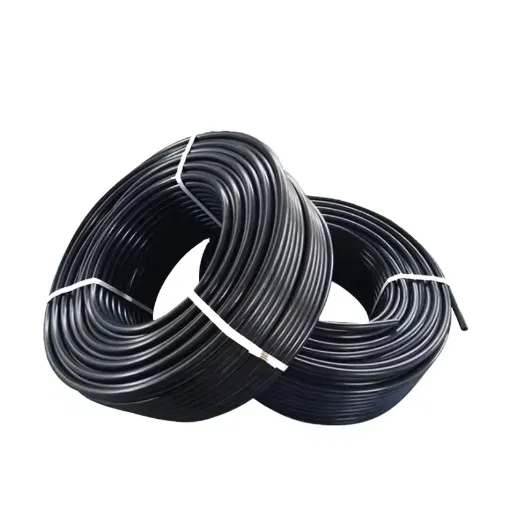
Criteria for Choosing a Supplier
When evaluating a reliable supplier for HDPE pipes, your assessment should focus on some vital aspects to warrant quality, dependability, and performance of your irrigation system in the long run. Some criteria to consider are:
Quality and Standards of the Product
The supplier should be able to provide HDPE pipes in accordance with relevant industrial standards and certifications (ISO, ASTM). Using quality materials goes a long way in preventing possible cracks, leakage, and premature deterioration.
Reputation and Customer Review
Study the supplier’s reputation among the general population by scouring through customer reviews and case studies. A supplier with lots of good reviews and a proven success pathway is most likely a trustworthy source that provides every time.
Product Range and Customization
A reliable supplier should be able to offer a wide range of HDPE pipe sizes, fittings, and accessories. Also, being able to customize materials for any particular need can also offer additional value.
Technical Assistance and Expertise
Choose a supplier who offers assistance with technical support with regard to installation, troubleshooting, and maintenance of the pipes.
Price Transparency and Value
Consider suppliers who can offer you competitive prices and stay true to the quality of their products. You must be able to view a price list without there being any additional or hidden charges.
Delivery and Timing Reliability
Meeting delivery deadlines is critical for schedule maintenance of the work. Usually, the supplier with great logistics networks ensures the timely availability of materials.
Sustainability and Environmental Practices
Choose an environmentally green supplier, i.e., a supplier with environmental-friendly recycling activities, sustainable practices, or a supplier of pipes made from recycled material.
By considering such selection criteria, you can make a wise choice for a supplier who supplies materials that enhance the efficacy and durability of your irrigation project.
Cost Considerations for HDPE Pipes
When pricing HDPE pipes for your project, the initial cost and value realized over time should be considered. The durability of HDPE pipes is an advantage, requiring little maintenance, and they have a lifespan of more than 50 years when well maintained. Thus they tend to be more cost-effective for the longer term. A pipe would be priced depending on its diameter, wall thickness, and pressure rating. The market situations ironically can greatly influence the price since in some years, material raw availability plummets at huge price increments in polymers.
Certain expenses for a project may be related to handling and transportation, installation, and trenching works. HDPE pipes are much lighter and flexible as compared to a lot of materials like PVC or metal and hence lower costs for shipping and faster to install with cheaper installation cost. The other benefits leading to water losses through leakage become important here, since operational costs may reduce drastically with time.
While comparing costs, look beyond the upfront price and analyze the overall return on investment. By collaborating with suppliers offering competitive prices, reliable quality, and custom-tailored solutions, you can cut down on costs while maintaining high-performance irrigation works.
Conclusion: Maximizing the Benefits of 3 Inch HDPE Pipe Roll
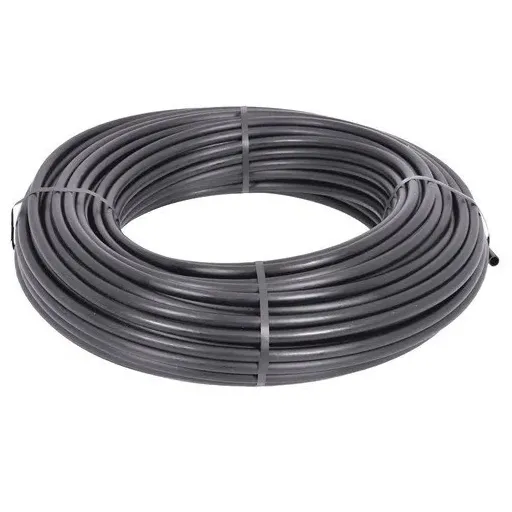
Future Trends in HDPE Pipe Technology
HDPE pipe technology keeps improving and evolving, resulting in better efficiency, strength, and sustainability. The trend goes into smart monitoring systems that are embedded within HDPE pipe networks. By placing sensors inside the pipes, the systems can set parameters such as flowrate, pressure, and possible leakage in real-time. This aids maintenance since the system can pinpoint any faults as early as possible, greatly reducing both downtime and maintenance costs.
An even bigger advancement concerns environmentally friendly production methods. Methods to decrease the adverse impact of HDPE pipe manufacturing processes have gained ground, including the use of recycled materials. In the meantime, pipe design is also being looked at for reductions in materials through improved wall structures and joint systems without sacrificing strength or performance.
In the future, HDPE pipes will find important applications in water distribution systems and gas distribution systems with a premium being placed on sustainability and resource efficiency in urban infrastructure. These developments, along with increased investments in research, guarantee a robust future for HDPE pipe technology capable of providing solutions to meet increasing global demand while respecting environmental standards.
Final Thoughts on Choosing HDPE for Your Projects
When assessing materials for the project at hand, HDPE is deemed a most versatile and sustainable option. It finds usage in water and gas pipelines and industrial purposes because it possesses characteristics like robustness against corrosion and flexibility. Furthermore, HDPE offers additional savings as well as maintenance costs over time, which arise from their comparatively very long life span relative to traditional materials.
In the recent times, the environmental protection relevance of HDPE has been booming even further. For example, many HDPE products contain recycled materials in an attempt to fight plastic pollution and carbon footprints worldwide. Production methods have also seen innovations and improvements to make them more efficient, decreasing energy consumption, and wasting less in manufacturing.
Infrastructure resilience is the other factor that is gaining ground. This notion of resilience, tugged by climate change, is the search for systems that stand under the hand of time. HDPE’s ability to hold up under extreme conditions, including freezing conditions and high-pressure settings, makes it a good candidate for critical infrastructure projects. With your choice of HDPE projects, you are endorsing a sustainable, future-ready solution to stand the test of time.
References
- Iowa State University – Section 5011: Fusible PVC and HDPE Pipe
This document provides detailed guidelines on handling and supporting HDPE pipes during installation. - Auburn University – Plastic Pipe for Highway Construction
A research report investigating the use of thermoplastic pipes, including HDPE, in highway construction. - National Academies Press – Performance of Corrugated Pipe Manufactured with Recycled HDPE
This report includes specifications and formulations for HDPE pipes, focusing on recycled materials. - Transportation Research Board – NTPEP Testing on HDPE Pipes
A comprehensive document on testing and performance evaluation of HDPE pipes. - ResearchGate – Long-Term Testing Methods for HDPE Pipe
A review paper discussing factors affecting the lifetime of HDPE pipes and testing methodologies.
Frequently Asked Questions (FAQ)
Q: What is a 3 HDPE pipe roll used for?
A: A 3 HDPE pipe roll is used mostly for water supply where drinking, irrigation, and drainage systems are concerned. The high density polyethylene offers durability and resistance to many environmental factors.
Q: Does the 3 inch polyethylene pipe stand against the conventional materials?
A: The 3 inch polyethylene pipe has its own merits over conventional materials like steel and PVC due to its light weight, corrosion-resistance, and low frictional resistance, making it suitable for moving water in a highly efficient way.
Q: Can I use it for farmland irrigation?
A: Yes, a 3 HDPE pipe roll is definitely fit for farmland irrigation. The black plastic tube aids in water distribution, whereas it also resists UV rays and chemicals, facilitating a long life in agricultural applications.
Q: What are the advantages of HDPE as water supply pipes?
Answer: HDPE pipes, including 3″ varieties, give good hygienic performance, resistance to some friction, and hardiness. It is energy-saving and versatile for uses, such as in building water supply systems and fire-fighting pipes.
Question: Is the 3 HDPE pipe roll suitable for gas transportation?
Answer: Although HDPE pipes can be used in gas transportation, care should be taken so that the HDPE grade is rated for gas application. Always check with manufacturers for suitability in your project.
Question: How does the inside wall structure of a 3 HDPE pipe roll look?
Answer: The inner wall of a 3 HDPE pipe roll is kept smooth to provide less resistance to water or fluid flow, which is good for water supply and irrigation systems.
Question: Can I connect 3-inch HDPE pipes to other types of pipes?
A: Yes, a 3-inch HDPE pipe can be joined with pipes of other materials, such as PVC or UPVC. To facilitate a proper connection, fittings and adapters must be used to ensure a leak-proof joint.
Q: What would be the usual length of one roll of a 3 HDPE pipe?
A: Standard 3 HDPE pipe rolls usually come in 100-foot lengths, although certain suppliers may provide custom lengths. Always verify the roll lengths from the manufacturer.
Q: Are there any additives used in the manufacture of a 3 HDPE pipe?
A: Additives may be introduced in the manufacture of 3 HDPE pipes to impart UV resistance, enhanced flexibility, and durability. They serve the purpose of extending the life of the pipes.
Q: What is the relevance of the color black as far as HDPE pipes are concerned?
A: Black color in HDPE piping-thus those with 3 HDPE pipe roll-is useful in providing UV protection, thus lessening the risk of the pipe getting damaged upon prolonged exposure to sunlight. Also found is the fact that this black color indicates the designation of the pipe, whether it is for irrigation or water supply.



